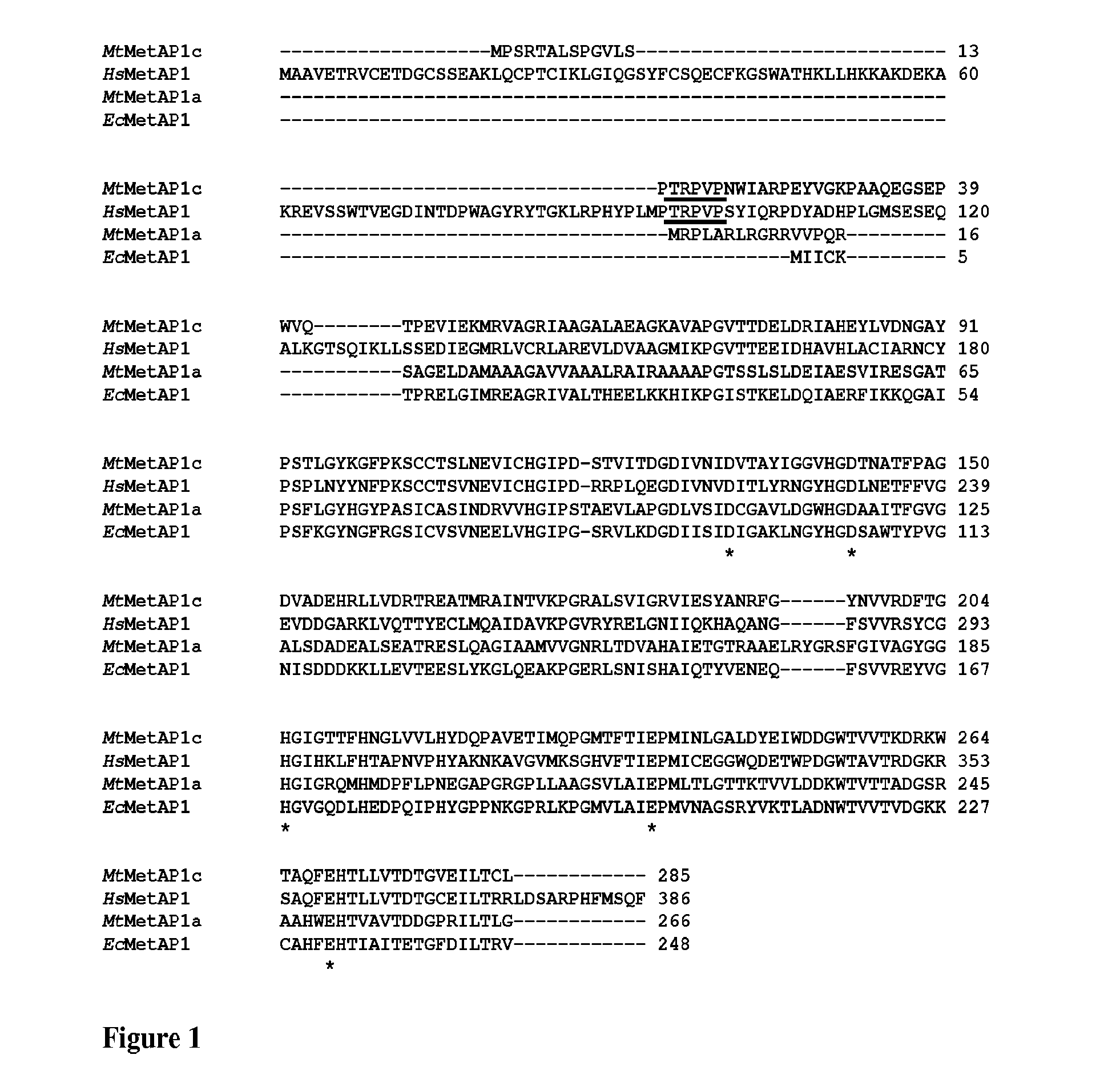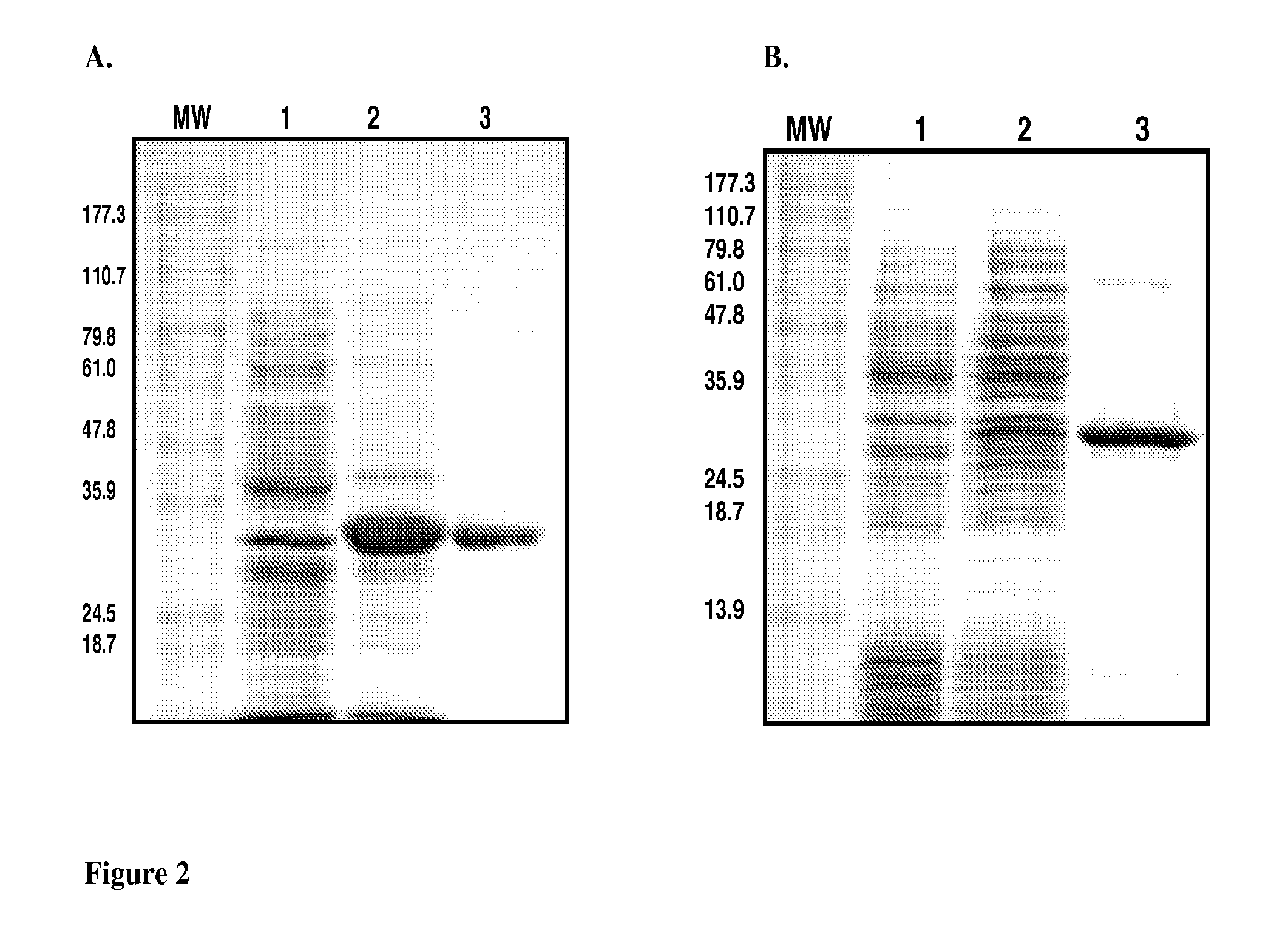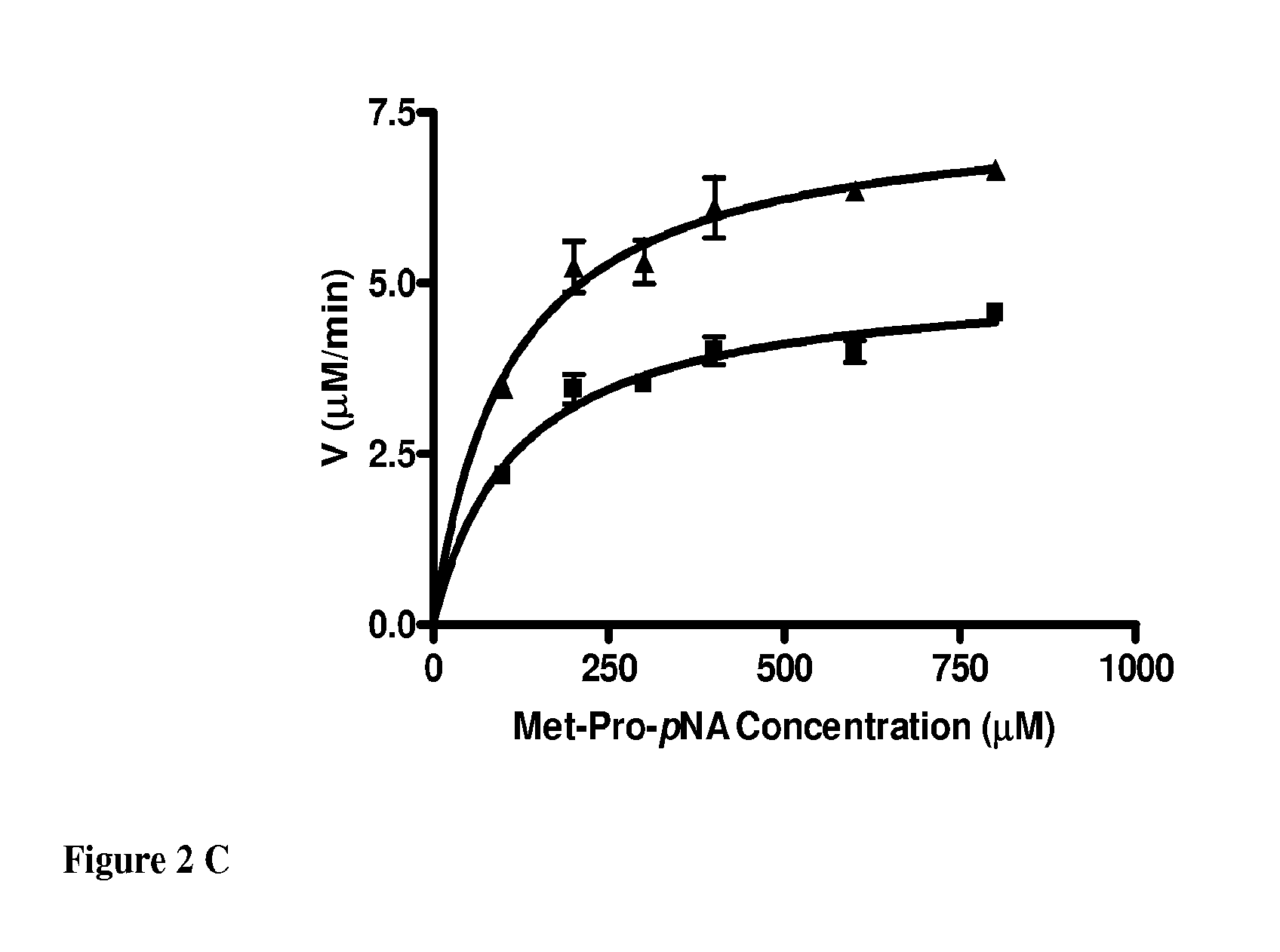Inhibitors of methionine aminopeptidases and methods of treating disorders
a methionine aminopeptidase and inhibitor technology, applied in the direction of biocide, antibacterial agents, drug compositions, etc., can solve the problems of slow growth phenotype, lethal disruption of both genes, and unclear whether inhibition of either or both mtmetaps is sufficient to inhibit bacterial growth, etc., to achieve the effect of inhibiting or reducing methionine aminopeptidas
- Summary
- Abstract
- Description
- Claims
- Application Information
AI Technical Summary
Benefits of technology
Problems solved by technology
Method used
Image
Examples
example 1
2-bromo-3-(4-fluoro)phenoxy-naphthoquinone (10)
[0518]Sodium hydride (48 mg, 1.2 equiv.; 60% dispersion in mineral oil) was added at once to a solution of 4-fluorophenol (129 mg, 1.15 equiv.) in THF (20 mL) at 0° C. After stirring vigorously for 10 min. 2,3-dibromonaphthoquinone (316 mg, 1 equiv.) in THF (5 mL) was added and the reaction mixture was stirred at room temperature for an hour. The reaction mixture was quenched by adding staurated aqueous ammonium chloride (10 mL) and the mixture was extracted with EtOAc (2×20 mL). The organic layers were pooled, the solvent was evaporated and the crude mixture was purified by flash column chromatography over silica gel (eluent: 10% EtOAc / hexanes) to obtain quinone 10 as a pale yellow solid. Yield: 250 mg, 72%; Rf (3:7 EtOAc / hexanes): 0.81 (UV active); 1H NMR (400 MHz, CDCl3): δ, 8.23 (ddd, J=7.8, 4.6 & 1.3 Hz, 2H, H-5,8), 8.12 (ddd, J=7.8, 4.6 & 1.3 Hz, 2H, H-6,7), 7.78 (ddd, J=7.8, 7.6 & 1.4 Hz, 2H, H-2′,6′), 7.01 (ddd, J=7.8, 7.6 & 1.4...
example 4
2-chloro-3-(3,5-difluoro)anilino-naphthoquinone (24)
[0523]Naphthoquinone 24 was prepared in a manner analogous to the one used for making compound 17 described above.
[0524]Yield: 286 mg, 56%; Rf (3:7 EtOAc / hexanes): 0.82 (UV active); 1H NMR (400 MHz, CDCl3): δ, 8.20 (ddd, J=7.8, 2.9 & 1.4 Hz, 1H, H-5), 8.16 (ddd, J=7.8, 2.9 & 1.4 Hz, 1H, H-8), 7.76 (ddd, J=7.8, 7.5 & 1.4 Hz, 1H, H-6), 7.74 (ddd, J=7.8, 7.5 & 1.4 Hz, 1H, H-7), 7.70 (br s, 1H, NH), 7.42 (s, 2H, H-2′,6′), 7.12 (s, 1H, H-4′); MALDI-TOF: m / z, 321 (95%, MITE), 343 (85%, M+Na+).
example 5
2-(3,5-bistrifluoromethyl)benzamido-2-chloronaphthoquinone (33)
[0525]A mixture of 2-amino-3-chloronaphthoquinone (207 mg, 1 equiv.) and NaH (48 mg, 1.2 equiv.; 60% dispersion in mineral oil) in THF was stirred vigorously for 20 min. and 3,5-bistrifluoromethylbenzoyl chloride (200 μL, 1.1 equiv.) was added gradually and stirred at room temperature for an additional 4 h. The reaction mixture was quenched with saturated aqueous ammonium chloride (20 mL) and the organic layer was extracted with EtOAc (2×20 mL). The solvent was evaporated and the crude product was purified by flash column chromatography over silica gel (eluent: 15% EtOAc / hexanes).
[0526]Yield: 380 mg, 85%; Rf (3:7 EtOAc / hexanes): 0.85 (UV active); 1H NMR (400 MHz, CDCl3): δ, 8.38 (s, 2H, H-2′,6′), 8.32 (br s, 1H, NH), 8.20 (ddd, J=7.8, 4.4 & 1.4 Hz, 1H, H-5), 8.15 (ddd, J=7.8, 4.4 & 1.4 Hz, 1H, H-8), 8.12 (s, 1H, H-4′), 7.77 (ddd, J=7.8, 7.5 & 1.4 Hz, 2H, H-6,7); MALDI-TOF: m / z, 448 (100%, MH+).
PUM
| Property | Measurement | Unit |
|---|---|---|
| Fraction | aaaaa | aaaaa |
| Molar density | aaaaa | aaaaa |
| Molar density | aaaaa | aaaaa |
Abstract
Description
Claims
Application Information
 Login to View More
Login to View More - R&D
- Intellectual Property
- Life Sciences
- Materials
- Tech Scout
- Unparalleled Data Quality
- Higher Quality Content
- 60% Fewer Hallucinations
Browse by: Latest US Patents, China's latest patents, Technical Efficacy Thesaurus, Application Domain, Technology Topic, Popular Technical Reports.
© 2025 PatSnap. All rights reserved.Legal|Privacy policy|Modern Slavery Act Transparency Statement|Sitemap|About US| Contact US: help@patsnap.com



